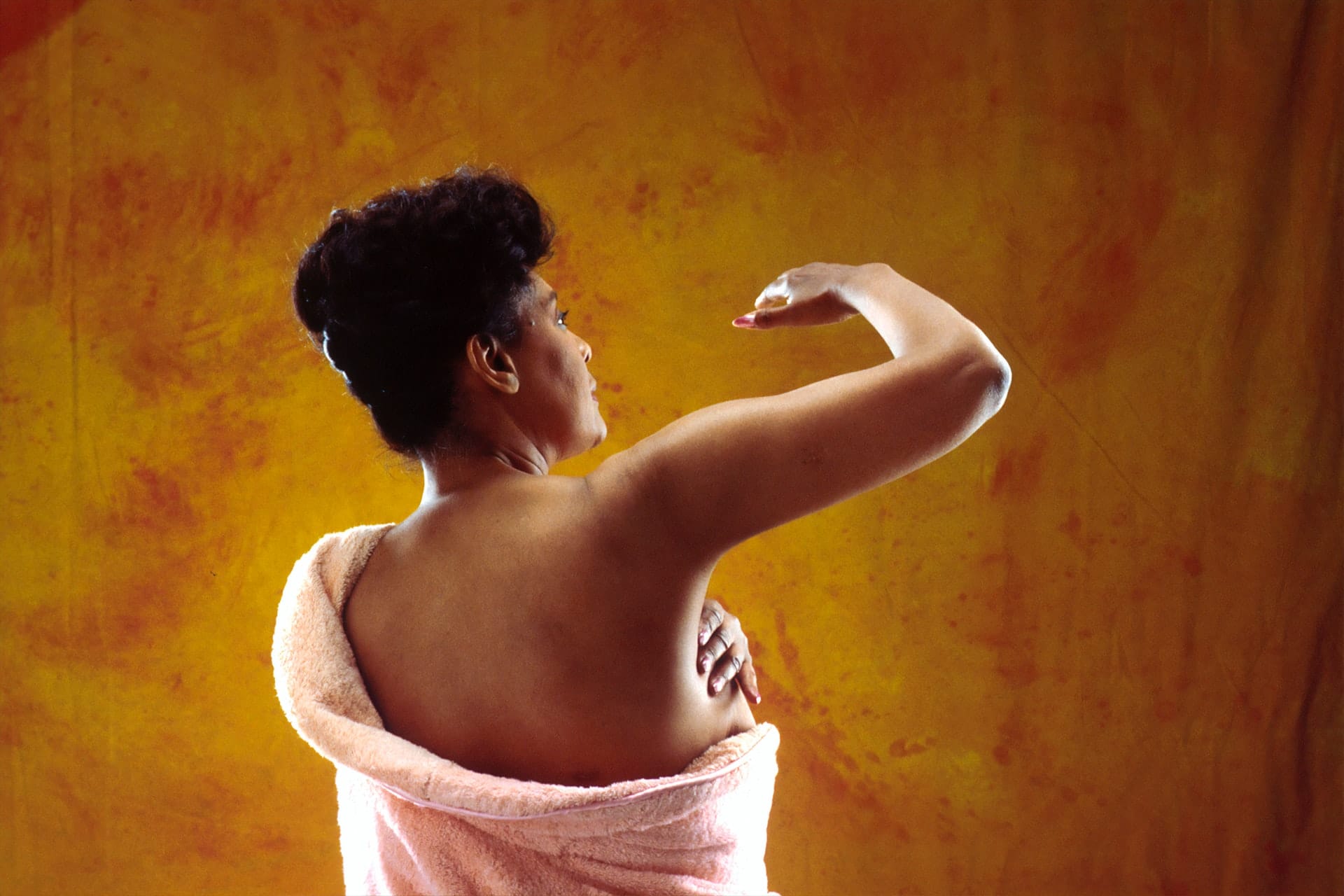Growing up, my best friend and I half-jokingly spent a lot of time doing exercises we hoped would increase the size of our breasts. We even had a cadence going where we chanted, “We must! We must! We must improve our bust!”
It worked. But that was largely a result of genetics and not the diligence of our exercise efforts or our giggling chants. Today, we’re both the proud owners of dense breasts. However, as we age, we’re finding oversized dense breasts aren’t a gift, after all.
What are Dense Breasts?
Our breast tissue comprises several types of tissue: glandular tissue, necessary to produce milk for breastfeeding babies; connective or fibrous tissue, which holds the breast together; and fatty tissue, which gives breasts their full shape. Breasts that contain more fibrous and glandular tissue than fatty tissue are considered to be dense.
Every breast has a certain level of permissible density. When viewed through a mammogram, non-dense breast tissues appear dark and transparent, making it easier to analyze.
However, when these tissues are so dense that the doctor can’t see through them, it becomes a diagnostic problem. A dense breast will appear like a thick white solid mass, making it difficult to perform an analysis or any other examination or subsequent diagnosis.
Why Do Some Women Have Dense Breasts?
There are various reasons why some women may have dense breasts, the most significant of which is heredity. In the case of my best friend and I, and even my sister, our grandmothers had fairly large breasts. Our mothers, not so much.
Breats density changes as we age, so although we might start with non-dense breasts, that can change by the time we reach our 50s. This is especially true if you have a lower body mass index, have had children, or are one hormone replacement therapy for menopause.
That doesn’t mean younger women aren’t prone to developing dense breasts. If you are pregnant or breastfeeding, the density of your breasts will likely increase.
Why Should I Care if I Have Dense Breasts?
Quite simply, women with dense breasts face an increased risk of breast cancer. In fact, the more dense your breasts are, the higher the risk. However, women with dense breasts are not at greater risk of dying from breast cancer than women with fatty or non-dense breasts.
Dense breasts make detecting the smallest changes in our breast tissue difficult to discern with a standard mammogram test. Both fibrous and glandular tissues look white on a mammogram. But so do small tumors. Early detection of breast cancer is crucial in developing a treatment plan to stop the disease’s progression.
How Do I Know if I Have Dense Breasts?
Dense breasts are detected by a radiologist using a mammogram. If the breasts are dense, the x-rays won’t pass through them. These dense nature of the glandular and fibrous tissues won’t allow for that passage. As a result, the x-ray results will be displayed in white.
Conversely, fatty tissues are less dense and can allow x-rays to pass through them. The result is a large black x-ray image. If the mammogram result shows white instead of black, this typically indicates that you have dense breasts.
There are different levels of breast density. Four categories use a classification system called Breast Imaging Reporting and Database Systems (BI-RADS).
Here are the four levels and their description.
A. Mostly Fatty
When the breasts have more fatty tissues and negligible glandular tissues than any other tissues present, it’s classified as mostly fatty. Women having fatty breasts are safe, but this isn’t common amongst women. If scanned, cancer will be easily detected because the fatty tissues are less dense.
B. Scattered Fibroglandular Density
The breasts have more fatty tissues in this category but significant amounts of dense tissues interspersed around it. Cancer can still be easily detected at this stage because the tissue is transparent but not as clear as the one made up of mostly fatty tissues.
C. Heterogeneously Dense
This category sees a mix of dense tissues and less dense tissues in almost equal proportions. But the dense tissues are more in percentage by a small margin. At this stage, detecting cancer cells becomes difficult through a traditional mammogram.
D. Extremely Dense
An extremely dense breast is largely comprised of glandular and connective tissues, and cancer detection is more challenging. Traditional mammograms look almost completely white, making it difficult to discern whether small cancerous tumor cells are forming.
Women whose breasts density falls into the latter two ranges are considered to have dense breasts. About half of the women who receive mammograms fall into the dense breast category.
Do I Need Special Tests if I Have Dense Breasts?
Many states do require that patients be told if they have dense breasts. Depending on your risk factors, such as a family history of breast cancer, your doctor might recommend additional screening.
Unfortunately, most states do not require insurance companies to cover the cost of additional screening. The good news is, some more progressive states have passed legislation that does require insurers to cover these extra tests.
Ultrasound
Ultrasounds are a diagnostic tool that uses sounds waves to analyze breast tissue—this same technology used for a wide variety of other diagnostic purposes.
3-D Mammography
Many imaging centers are transitioning to this new type of x-ray as the standard form of mammography. Multiple breast images are taken from several angles, which are then compiled by a computer to create a 3-D image of your breast.
Breast MRI
MRIs do not use tradition radiation; rather it uses strong magnetic fields, magnetic field gradients, and radio waves to generate images of the breasts. The test is not a standard secondary screening test like an ultrasound. Women who have a very high risk of breast cancer, such as those with genetic mutations that increase the risk of cancer, are the usual candidates for a breast MRI.
Can I Reduce the Density of my Breasts?
While you can reduce the size of your breasts through diet, you cannot reduce your breast density. Dieting will only reduce the fatty tissue in your breasts and not the fibrous or glandular tissue.
In fact, lower BMI and weight loss have actually been shown to increase breast density. This is especially true in women of menopausal age.
Final Words
October is Breast Cancer Awareness Month – please make sure you take the time to protect your breast health.
If you have dense breasts it doesn’t automatically mean the development of breast cancer in an automatic next step. It does, however, increase your risk and, that means you need to be more mindful and diligent with your self-examinations. It also means that you should be religious about making sure you get regular mammograms.
If you’ve never been told you have dense breasts and think you do, talk with your healthcare provider. If there is a history of breast cancer in your family, regardless of whether or not you have dense breasts, your health care provider must know that too. They may want to err on the side of caution and make additional breast screenings part of your regular breast health checkups.

